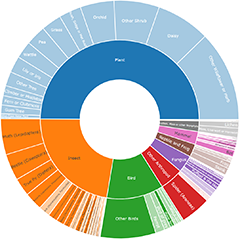Announcements
12 Oct 2025
Following a review of our operations, we have made the difficult decision to wind down.Please see our platform transition guide for specific sunset dates as we now ensure our users are well supported ...
Continue reading
Known issue affecting NatureMapr Data Collector mobile app
NatureMapr moves to simpler, flatter national structure
Mobile App update and known issues
Discussion
Liam.m
wrote:
50 min ago
Hi AlisonMilton, thanks for your sighting. The last picture is a fur seal. To help us verify each species, please submit each species as a separate sighting. You can edit this sighting and click the duplicate button to make a duplicate of the original sighting.
Phalacrocorax fuscescens
Liam.m
wrote:
54 min ago
Hi YellowButton, thanks for your sighting. It looks like the location information you provided is incorrect (Defaulted to Ghan NT). Please review and update the location of this record when you get a chance.
Rhipidura albiscapa
Caric
wrote:
Yesterday
Many thanks! I remember it did look different from the normal New Holland we saw with it.
Phylidonyris niger X novaehollandiae (Hybrid)
MichaelMulvaney
wrote:
Yesterday
Thanks Rob - Tracker is part of Stacey's phD project
Callocephalon fimbriatum
Significant sightings
- Melanodryas cucullata cucullata at Rendezvous Creek, ACT
- Neosericornis citreogularis
- Callocephalon fimbriatum at Deakin, ACT
- Lucienia cycloptera
- Hypochrysops delicia at Theodore, ACT
- Hypochrysops delicia at Bywong, NSW
- Osa sinclairae
- Thelymitra alpicola
- Cyphaleus quadrispinosus at Crowther, NSW
- Mitrasacme serpyllifolia at Oallen, NSW
Top contributors
- AlisonMilton 19.5K
- Hejor1 17.5K
- trevorpreston 16.4K
- Tapirlord 12.1K
- Mike 11.4K
- MichaelBedingfield 10.9K
- RodDeb 10.7K
- ConBoekel 10.5K
- kasiaaus 9.9K
- KylieWaldon 9.2K
Top moderators
- MichaelMulvaney 64K
- Tapirlord 43.2K
- MichaelBedingfield 24.9K
- Liam.m 22.7K
- donhe 18.3K
- ibaird 16.2K
- natureguy 15.6K
- MatthewFrawley 13K
- AlisonMilton 12.3K
- plants 9.1K














































































































